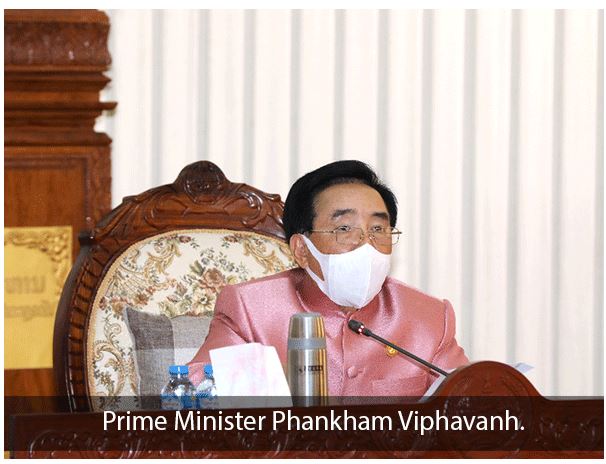Laos: Govt eyes fuel price restructure to ease impact on the economy
Government bodies have been told to revise the price structure of fuel to minimise the impacts on the economy as well as ease the financial burden on ordinary people.
Minister and Head of the Prime Minister’s Office, Mr Alounxay Sounnalath, outlined the results of the government’s monthly meeting held in Vientiane last week, chaired by Prime Minister Phankham Viphavanh.
“The government acknowledges that the price of petrol is too high. The government may collect more revenue than expected from taxes and fees charged in the import and distribution of fuel, but the surge in the global oil price is severely impacting Lao consumers,” Mr Alounxay said.
With taxes and fees accounting for 31-46 percent of the oil price charged in Laos, it has become essential to review the price structure of fuel and encourage the use of electric vehicles in line with a resolution passed at last month’s Cabinet meeting.
Regulating the price of fuel is part of the government’s national agenda to address economic and financial difficulties.
The government is attempting to boost productivity and minimise imports, bolster revenue collection, create conditions conducive to more private investment, and reduce its debts.
Since the introduction of the national agenda last year, the investment climate has improved, Mr Alounxay told a press conference last week.
“The procedures involved and the length of time it takes to approve a business licence has dropped from 173 to 17 days,” he said.
“The government is attempting to address the problems facing Lao exporters and further promote commercial production.”
The government has been concentrating on 33 iron ore mining projects, which have generated US$46.6 million for the national budget. In addition, the government has focused on the development of infrastructure such as the new railway and expressway, to connect Laos with the rest of the region.
Over the past year, the government has introduced an electronic system to modernise revenue collection and close loopholes to prevent financial leaks.
The government has earned 45 billion kip from tariffs and 85 billion kip from taxes paid by the owners of unlawful vehicles. In addition, more income has been generated following the revision of service fees at the Second Lao-Thai Friendship Bridge, which links Savannakhet province to Mukdahan province in Thailand.
The financial liquidity of the Lao Development Bank and Agricultural Promotion Bank has improved after private companies bought shares in the two banks. The banks’ business operations are now moving towards profitability after operating at a loss for many years.
The government is working to help small and medium enterprises (SMEs) gain access to funding. As of the end of 2021, the number of loans given to SMEs represented 14.6 percent of all credit provided by commercial banks.
As of January this year, loans issued to the agriculture sector comprised 8 percent of the total.
Source: https://www.vientianetimes.org.la/freeContent/FreeConten_Govt_52_22.php


 English
English




